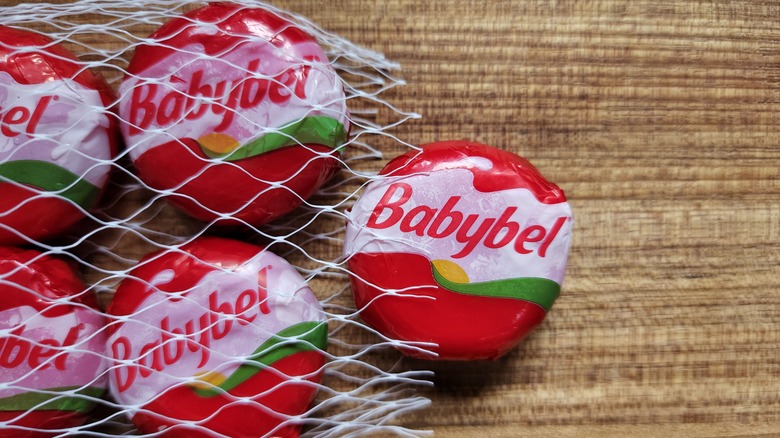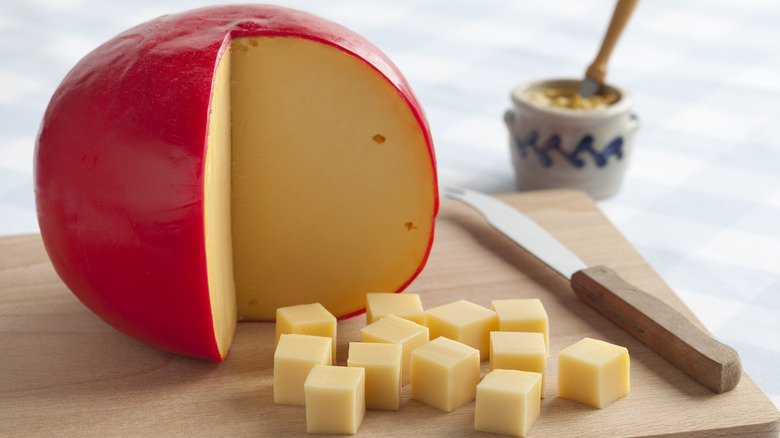What Type Of Cheese Is Babybel Anyways?
Say the name "Babybel," and it's impossible not to picture those flat little rounds of cheese coated in red wax, a staple of school and office lunches alike. And there's something so fun about peeling off that coating, too — tug firmly on that strip, and the prize of dairy goodness within is revealed to you from a shell that ends up looking like Pac Man's disembodied head.
The original version is a pale-colored semisoft cow's milk cheese in the style of edam (which is often found enrobed with wax at grocery stores too), but Babybel now comes in lots of other varieties, including a light version, Gouda, mozzarella, white cheddar, and Monterey Jack. There's also a plant-based version designed to taste like mozzarella.
And what we know to be Babybel cheese is actually its miniature version, aka a "Mini Babybel." Large-format Babybels exist in other countries under the name Babybel Maxi, but those aren't available in the United States for us peel-and-eat cheese lovers, unfortunately.
What is edam cheese?
As mentioned earlier, Babybel's original version is meant to be similar to an Edam-style cheese. Edam cheese is a semi-hard cheese from the Netherlands that has nutty tones to it, along with a smooth texture. The young version is closest to what Babybel's cheese tastes like, and it pairs particularly well with fruit.
A similar cheese to Edam is Gouda, which also originates from the Netherlands. But unlike Edam, Babybel itself hails from France, though the Babybel you've eaten in the United States has likely been made in Kentucky and South Dakota. And it's been around for a long time, too; Babybel first hit the market in 1952 in France, but is now sold in over 50 countries today. It looks like people's love of Babybel hasn't been lost in translation though, and everyone across the world seemingly loves peeling that wax off as much as we do.

